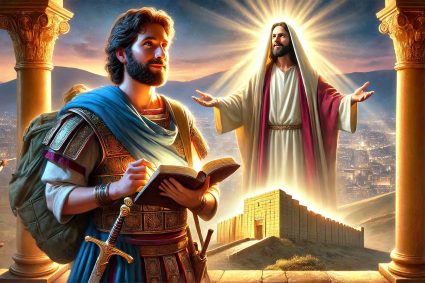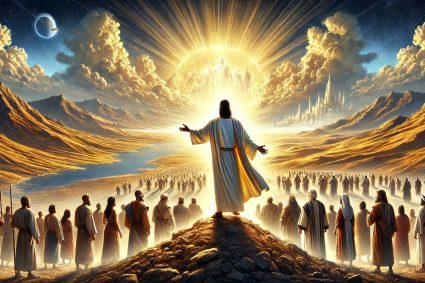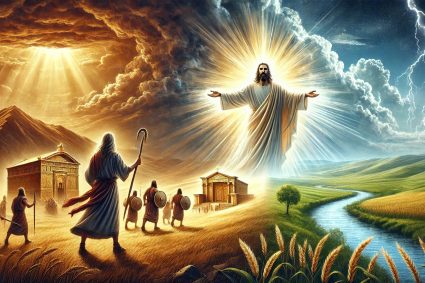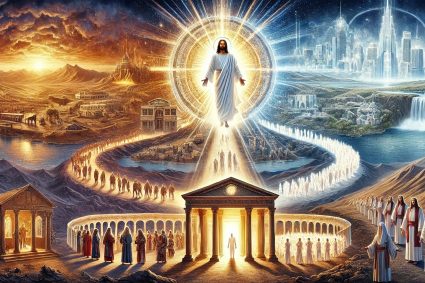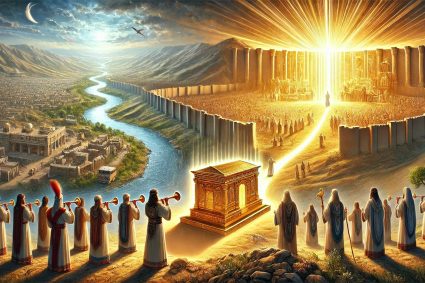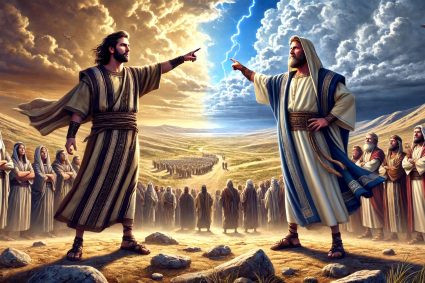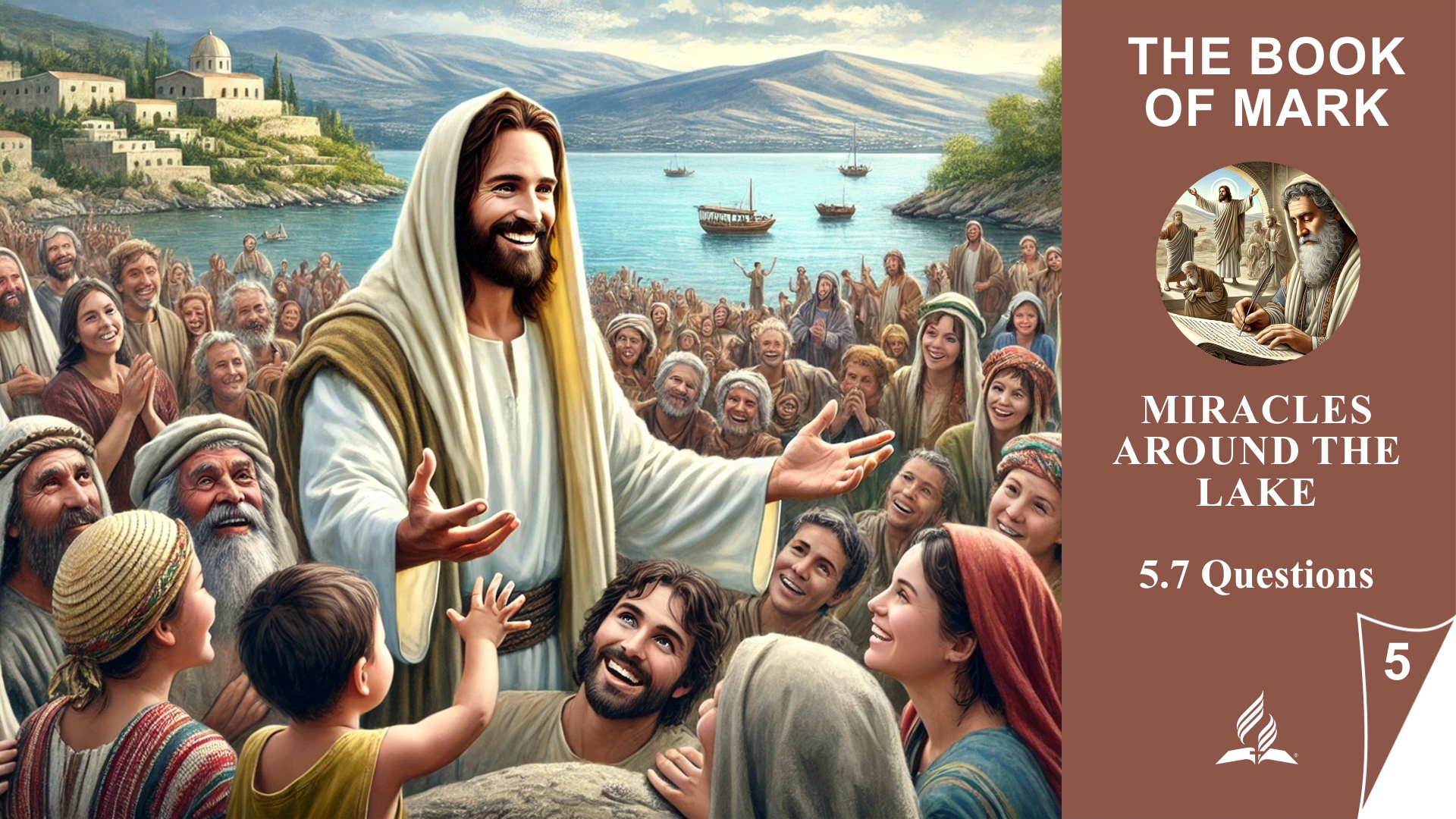


1.If someone asked you, “What has Jesus freed you from?” what would you say?
Jesus has freed me from the burden of sin and the associated guilt. He has opened my eyes to the truth and led me out of the darkness of doubt and fear. Through his love and grace, he has given me new purpose and meaning in life, freed me from negative behavioral patterns, and given me the strength to live a life of peace, joy, and hope. He has freed me from the constant search for approval and validation from others by showing me that my true identity and worth are found in him. Jesus has also helped me find inner peace and understand that I am valuable and loved in God’s eyes, regardless of my flaws and weaknesses. This liberation through Jesus has transformed my life and given me a new perspective on myself and the world around me.
2.Discuss why God sometimes allows good people like John the Baptist to be imprisoned and executed. What comfort or hope can we find despite these difficult questions?
Why God sometimes allows good people like John the Baptist to be imprisoned and executed:
-
Free Will and Evil in the World:
-
Free Will: God has given people free will, and unfortunately, some choose to do evil. Herod and his family acted out of their free will, leading to John being imprisoned and eventually executed.
-
Existence of Evil: The presence of evil and sin in the world means that even good people suffer. John the Baptist became a victim of others’ evil intentions and intrigues.
-
-
Divine Plans and Purposes:
-
God’s Greater Plan: Sometimes God’s ways and plans are beyond our understanding. John’s death played a role in God’s larger plan for humanity, including preparing the way for Jesus’ own sacrifice.
-
Testimony and Example: The life and death of John the Baptist serve as a powerful testimony to faith and loyalty to God. His courage and steadfastness inspire other believers to remain true to their faith even in difficult times.
-
-
Suffering and Persecution as Part of Faith:
-
Persecution of the Righteous: The Bible teaches that persecution and suffering can be part of the life of believers. Jesus said that his followers would face persecution (John 15:20).
-
Testing and Strengthening of Faith: Suffering and trials can strengthen a person’s faith and draw them closer to God. They provide opportunities to deepen one’s faith and trust in God’s faithfulness.
-
Comfort and Hope Despite Difficult Questions:
-
God’s Presence and Faithfulness:
-
God’s Nearness: God promises to be with us even in the darkest times. His presence comforts and strengthens us (Psalm 23:4).
-
God’s Faithfulness: We can trust that God is faithful and has a plan, even if we don’t always understand it (Romans 8:28).
-
-
Hope of Resurrection:
-
Eternal Life: Death is not the end. John the Baptist and all believers have the hope of resurrection and eternal life with God (John 11:25-26).
-
God’s Justice: God will one day judge all injustice and restore righteousness (Revelation 21:4).
-
-
Example in Suffering:
-
Example of Jesus: Jesus himself suffered persecution and death to redeem us. His example shows us that suffering can have a purpose and that God can turn it for good.
-
Example of Saints: Stories of people like John the Baptist encourage us to remain steadfast in our own faith and trust in God’s ultimate justice.
-
-
Community and Support:
-
Community of Believers: In times of suffering, we find comfort and support in the community of believers who help us strengthen our faith and encourage one another (Galatians 6:2).
-
Summary: Although we do not always understand why God allows good people like John the Baptist to suffer, we can find comfort and hope in God’s presence, faithfulness, the hope of resurrection, the example of Jesus, and the community of believers. These elements help us remain steadfast in times of suffering and preserve our faith.

3.What can a church with limited resources learn from the feeding of the 5000?
Lessons for a church with limited resources from the feeding of the 5000:
The story of the feeding of the 5000 in Mark 6:34-44 offers valuable lessons, especially for churches with limited resources. Here are some important teachings that such a church can draw from this story:
-
Trust in God’s Provision:
-
God’s Supernatural Power: The story shows that Jesus can miraculously multiply the few available resources – five loaves and two fish. This teaches us to trust in God’s ability to multiply even our limited means and provide abundantly for our needs.
-
Prayer and Trust: A church should persist in prayer and trust in God’s provision rather than be discouraged by seemingly insufficient resources.
-
-
Willingness to Share What Is Available:
-
Sharing Despite Scarcity: The disciples willingly gave what little they had, and Jesus multiplied it. This attitude of sharing, even when resources are scarce, can work wonders in the church and lead to unexpected blessings.
-
Belief in Community: Sharing and mutual support strengthen the community and create an atmosphere of trust and cooperation.
-
-
Organization and Cooperation:
-
Structured Distribution: Jesus organized the crowd by seating them in groups, which facilitated the distribution of food. This shows the importance of organization and efficient use of available resources.
-
Teamwork: The disciples worked together to distribute the food. In a church, teamwork is crucial to overcoming challenges together and serving effectively.
-
-
Small Contributions Matter:
-
Every Contribution Is Valuable: The story shows that even a small contribution – like the five loaves and two fish – can make a big difference when placed in God’s hands. This encourages every church member to contribute, no matter how small it may seem.
-
Utilizing Diverse Gifts: Every person in the church has talents and resources that can be used for the common good. Encouraging these gifts can maximize the collective impact of the church.
-
-
Faith in God’s Plan and Timing:
-
Patience and Trust: The disciples had to trust that Jesus knew what he was doing, even when the situation seemed hopeless. This teaches us to be patient and trust in God’s plan and timing, even if we do not see the solution immediately.
-
Openness to Miracles: A church should be open to the supernatural and to the miracles God can work when we give ourselves to him in trust and obedience.
-
-
Gratitude and Encouragement:
-
Thanksgiving: Jesus gave thanks to God for the food before distributing it. This shows the importance of gratitude, even in difficult situations. A thankful attitude can strengthen and encourage the hearts and minds of the church.
-
Sharing Testimonies: Sharing stories of God’s provision and miracles in the church can strengthen faith and encourage members.
-
Summary: The feeding of the 5000 teaches a church with limited resources to trust in God’s supernatural provision, willingly share what is available, work in an organized and cooperative manner, value small contributions, be patient with God’s plan, and maintain an attitude of gratitude. By applying these principles, the church can experience how God multiplies their limited means and wonderfully meets their needs.
4.Compare popular views of Jesus today with the image of Him in Mark 5 and 6. That is, what about those who use Jesus to gain political power and dominate others?
Popular views of Jesus today vary greatly and are often shaped by individual and cultural perspectives. Some people see Jesus as a moral teacher, a spiritual leader, or a social reformer. In some cases, Jesus is even used to gain political power or to dominate others. These modern conceptions stand in stark contrast to the image of Jesus portrayed in Mark 5 and 6.
In Mark 5 and 6, Jesus is depicted as someone who does not seek political power or to dominate others. Instead, he reveals himself as the compassionate healer and the powerful Lord over nature and demons. Here are some key aspects that highlight these differences:
-
Healing and Deliverance:
-
Mark 5: Jesus heals the demon-possessed man, the bleeding woman, and raises Jairus’ daughter from the dead. These acts demonstrate his care for the well-being of people and his power to overcome suffering and death.
-
Popular Views Today: Some people use the image of Jesus to further their own interests, often by tailoring his message to their political or social agendas. They might try to manipulate his teachings to gain power and influence.
-
-
Humility and Service:
-
Mark 6: Jesus feeds 5000 people with five loaves and two fish, showing his care and willingness to serve. He sends the disciples out to proclaim the gospel and heal people without material security, relying on God’s provision.
-
Popular Views Today: In some cases, Jesus is misused as a symbol for power and domination. Instead of serving humbly, his name is used to consolidate power and control others.
-
-
Rejection and Path of Suffering:
-
Mark 6: Jesus is rejected in his hometown of Nazareth, showing that his message and identity are often misunderstood and rejected. Additionally, the death of John the Baptist reminds us that true discipleship often involves suffering and sacrifice.
-
Popular Views Today: Some contemporary views present Jesus as someone who brings success and prosperity, ignoring the aspects of his suffering and self-sacrifice.
-
Conclusion: The contrast between the image of Jesus in Mark 5 and 6 and some modern views of him is clear. While Jesus is portrayed in the Gospels as a serving, healing, and suffering Messiah, he is often misused today for political purposes and to gain power. A correct understanding of Jesus requires recognizing his true nature and mission – proclaiming the Kingdom of God through service, humility, and self-sacrifice.
(Visited 15 times, 1 visits today)

